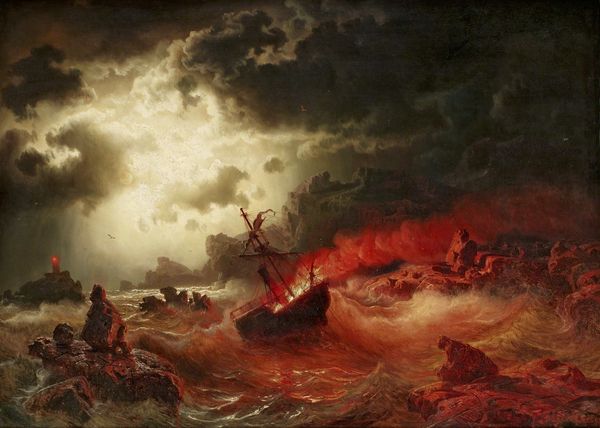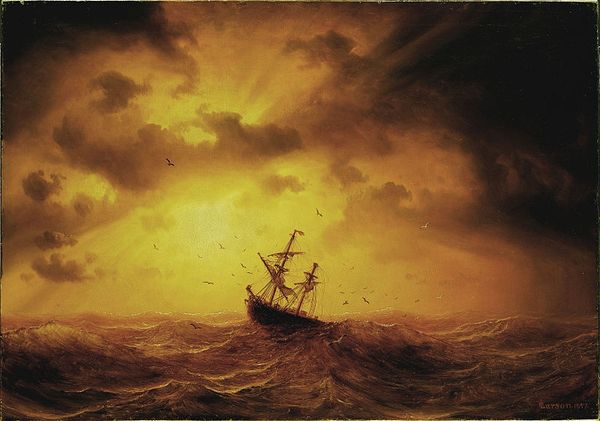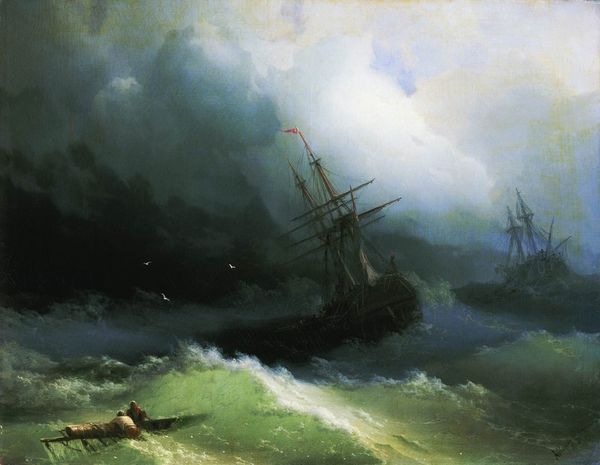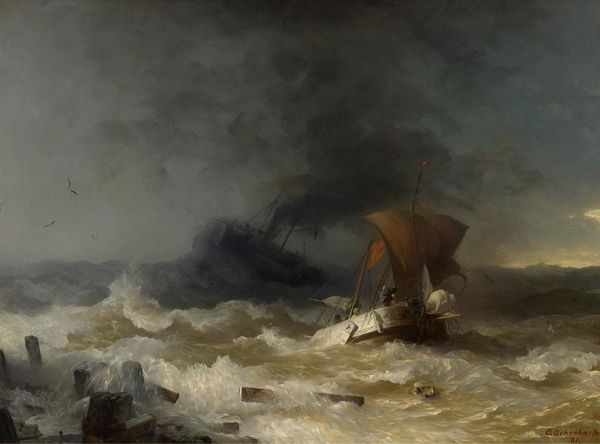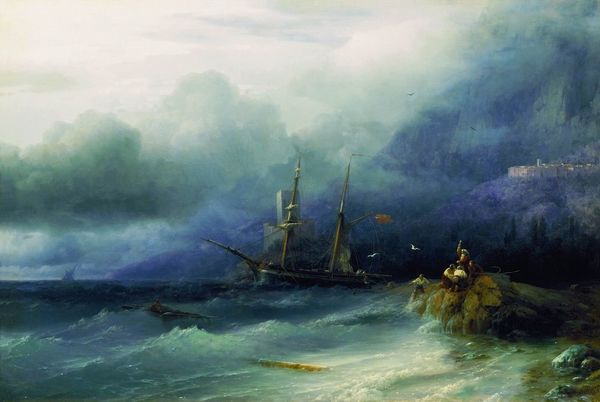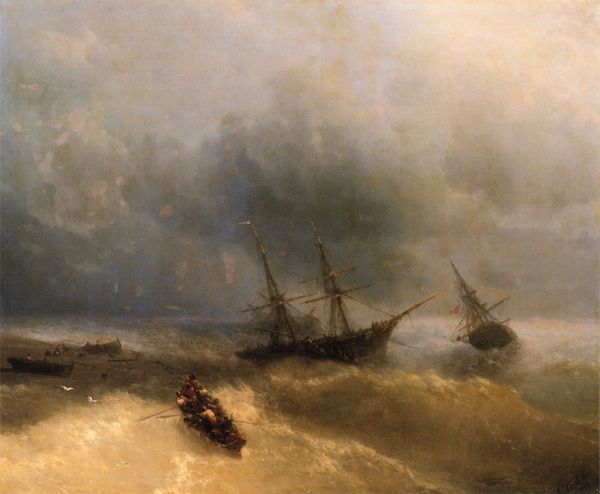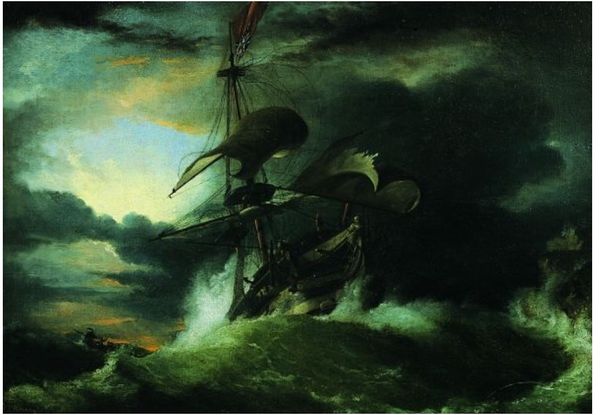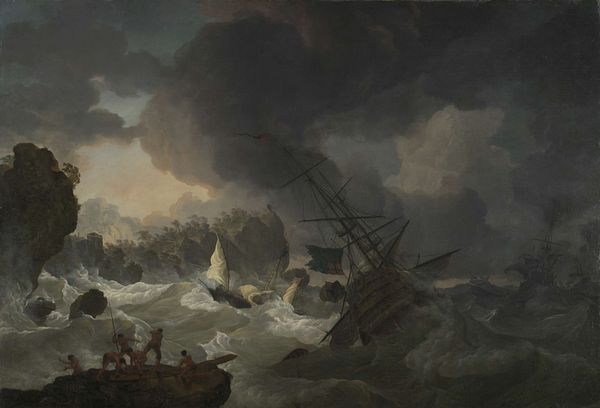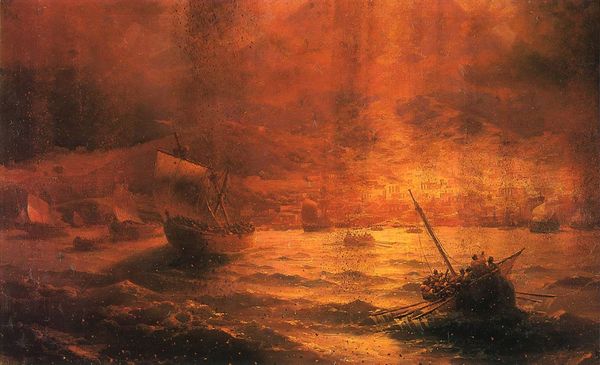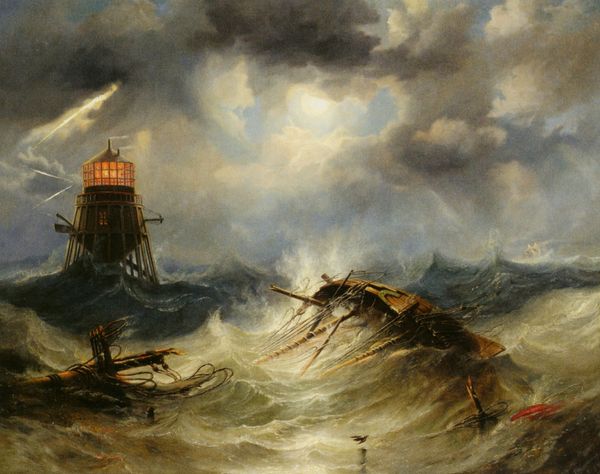
Copyright: Public domain
Curator: This is "Burning Steamship," painted by Marcus Larson in 1857. It's an oil painting, fairly dramatic, wouldn't you agree? Editor: It's incredibly dramatic! The churning water, the ominous sky, the fiery glow... It feels like a metaphor for societal upheaval, perhaps a commentary on industrial disasters and unchecked progress consuming itself. Curator: Yes, Larson certainly leans into the sublime terror aspect of Romanticism here. Water is a potent symbol—often representing the unconscious, but also chaos and destruction. The ship aflame? Perhaps a fleeting symbol of technological ambition being devoured. It can touch on a collective unconscious. Editor: I see the chaos, definitely. Ships often symbolize voyages of discovery or colonial expansion. To see it engulfed in flames... is that commentary on the violence inherent in those processes, or an allusion to a specific historical maritime disaster that resonated with the public? It's speaking of that sense of history-painting while seeming quite modern too. Curator: He captures the raw power of nature overwhelming human endeavor and enterprise. The visual language speaks loudly – the sky itself seems almost alive, about to swallow the burning wreck whole, an inescapable end in sight. Remember, maritime disasters were frequent. Ships symbolized human pride, yet were perpetually at the mercy of a force far grander. Editor: It's true, this piece evokes the feeling that something’s ending and perhaps it deserves to. Larson taps into a deep, maybe even subconscious fear. Also, I am sure that the rising industrialization of that moment played a crucial role for a painter of his time, where he seems to use ships more like characters. Curator: And let’s consider the date again, 1857; this puts Larson at a critical historical point in his society – new technological possibilities arise, along with mass emigration and ship disasters across Europe that reached mythic proportions. "Burning Steamship" can almost act as the memento mori of its time. Editor: Yes! Considering this historical-social context reveals new depths in the artwork, so more than only a reflection of a society – the artist appears deeply troubled. Curator: Exactly, a moment of grand social and technological evolution viewed with the specter of mortality and loss. The artist takes the tragedy and gives us an introspective message about time. Editor: Absolutely, an era defined both by groundbreaking change, immense risk, and sometimes total annihilation – this painting becomes a powerful symbol of cultural memory.
